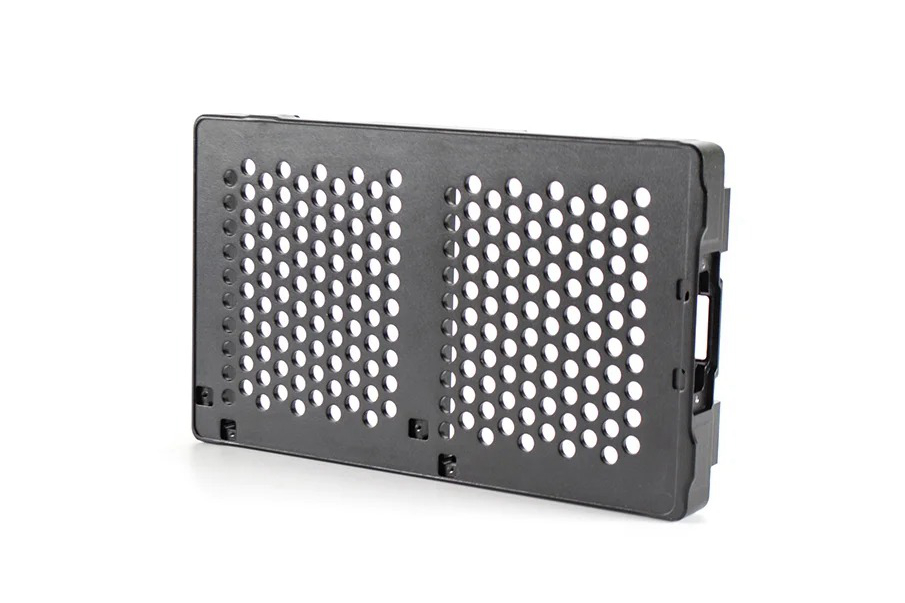Revolutionizing Manufacturing: Aluminum AlSi10Mg 3D Printed Components
Introduction to AlSi10Mg 3D Printing
Aluminum AlSi10Mg is a widely adopted alloy in metal additive manufacturing due to its excellent strength-to-weight ratio, thermal conductivity, and corrosion resistance. Its balanced mechanical and thermal properties make it ideal for complex geometries in lightweight engineering structures.
At Neway Aerotech, our Aluminum 3D Printing service enables high-precision fabrication of AlSi10Mg parts for aerospace, automotive, and high-performance industrial applications.
Material Overview: Aluminum AlSi10Mg
Key Properties
Property | Value/Range | Description |
|---|---|---|
Density | 2.67 g/cm³ | Lightweight metal ideal for structural efficiency |
Ultimate Tensile Strength | 400–460 MPa (heat-treated) | Higher than cast equivalents due to fine microstructure |
Yield Strength | 230–270 MPa | Stable plastic deformation resistance under working loads |
Elongation at Break | 3–5% (as-printed) / up to 10% | Improved via HIP post-processing |
Thermal Conductivity | ~150 W/m·K | Excellent for heat exchangers, electronic housing |
Operating Temperature | Up to 200–250°C | Suitable for automotive and structural brackets under heat |
Advantages of 3D Printing AlSi10Mg
Complex thin-wall features with uniform material density
Cost-effective rapid prototyping and low-volume production
Integrated cooling channels for thermal management systems
Reduced weight vs. machined or cast aluminum parts
Shorter lead time for functional prototyping
Process: 3D Printing Aluminum AlSi10Mg
Technology Used: Selective Laser Melting (SLM)
At Neway Aerotech, we use SLM 3D printing to fuse gas-atomized AlSi10Mg powder layer by layer. This high-energy laser-based process ensures uniform microstructure and enhanced mechanical properties.
Build Parameters:
Laser Power: 200–400 W
Layer Thickness: 30–50 μm
Scan Speed: 800–1200 mm/s
Minimum Wall Thickness: 0.6 mm
Feature Tolerance: ±0.1 mm
Post-Processing for AlSi10Mg Components
Standard Post-Processes
Stress Relief Heat Treatment: Performed at 300°C for 2–3 hours to relieve internal stress
HIP (Hot Isostatic Pressing): Optional, improves fatigue life and ductility
Machining: For critical tolerances and surface finishes
Shot Peening & Sand Blasting: Surface finishing for improved fatigue resistance
Anodizing or Coating: For corrosion resistance and aesthetics
Application Case Study: AlSi10Mg Automotive Heat Sink Bracket
Project Background
A Tier-1 automotive client required a lightweight, thermally conductive bracket to support a high-power inverter module. The component had to operate under 220°C continuous load, resist vibration fatigue, and be prototyped within 5 days.
Manufacturing Workflow
Design Optimization: Topology-optimized with 30% mass reduction using CAD/CAE simulation
SLM Printing: Built on aluminum substrate, 50 μm layers, 99.8% density achieved
Post-Treatment: Stress relief at 320°C, then machined interface surface to Ra ≤ 0.8 μm
Coating: Anodized for corrosion protection and improved heat dissipation
Inspection: CMM inspection, SEM analysis, and X-ray verification for porosity
Results and Performance
Final bracket weight: 45% lighter than machined A6061 part
Thermal resistance improved by 18% due to embedded channels
Withstood 500-hour thermal cycling (–40°C to 220°C) without cracking
Passed vibration test at 10 G for 6 hours without deformation
Fully functional prototype delivered in 4 business days
Industry Applications of AlSi10Mg 3D Printing
Aerospace: UAV structural supports, brackets, housing
Automotive: Battery cooling plates, EV motor mounts
Electronics: Heat sinks, RF shielding enclosures
Robotics and Drones: Lightweight sensor mounts and frames
FAQs
What is the difference between AlSi10Mg and traditional cast aluminum alloys?
Can AlSi10Mg parts be used directly after 3D printing?
What post-processing is recommended for high-cycle fatigue resistance?
How does AlSi10Mg compare to titanium in weight-critical applications?
What is the minimum feature size achievable in SLM-printed AlSi10Mg components?

